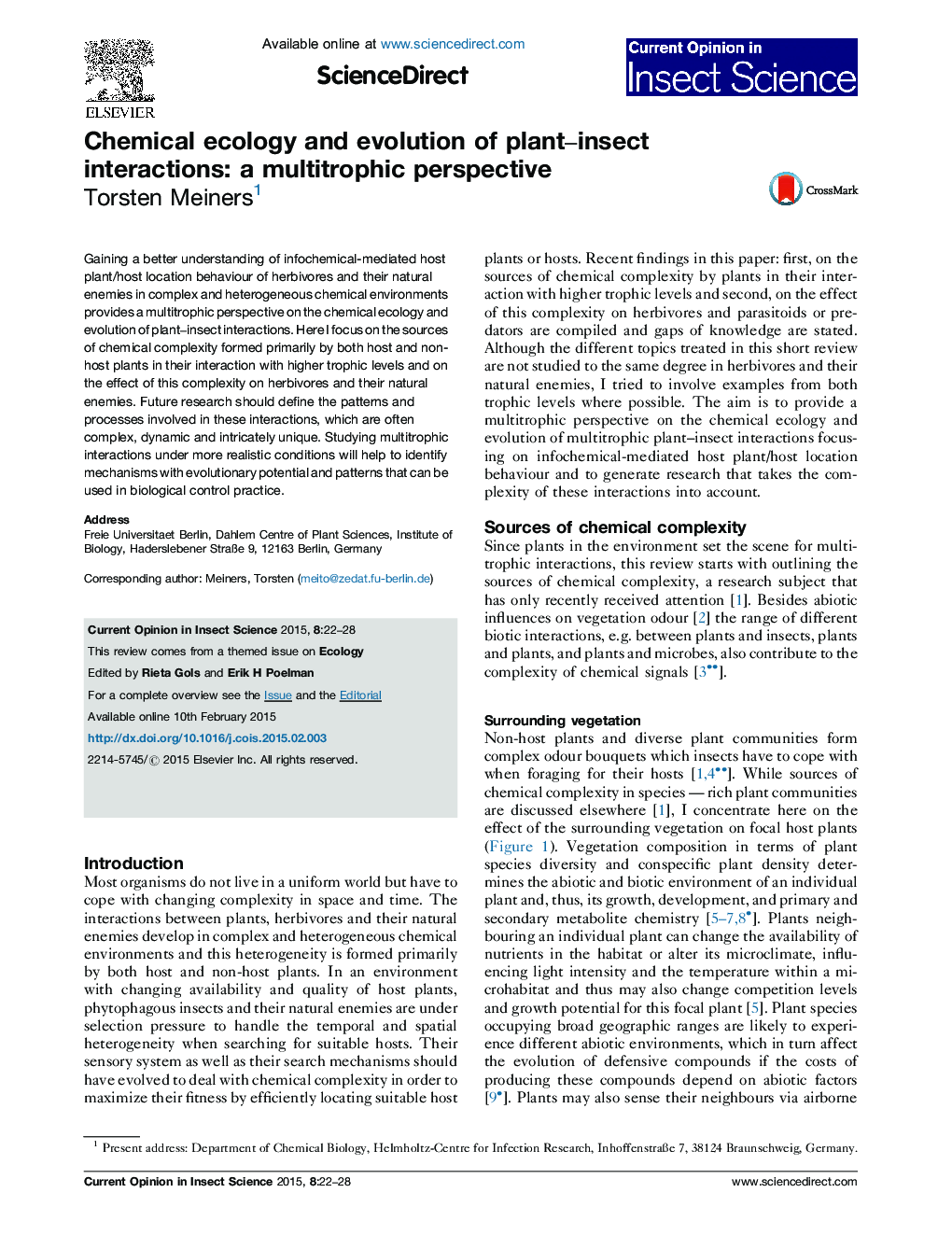| Article ID | Journal | Published Year | Pages | File Type |
|---|---|---|---|---|
| 4508232 | Current Opinion in Insect Science | 2015 | 7 Pages |
•Multitrophic interactions develop in complex and heterogeneous chemical environments.•Surrounding vegetation can affect plant chemistry via altered (a)biotic environments.•Insect responses to chemical signals can depend on the context they are perceived in.•Vegetation odour complexity can indicate a patch of interest for insects.•Multifactor studies on all trophic levels can reveal the role of chemical complexity.
Gaining a better understanding of infochemical-mediated host plant/host location behaviour of herbivores and their natural enemies in complex and heterogeneous chemical environments provides a multitrophic perspective on the chemical ecology and evolution of plant–insect interactions. Here I focus on the sources of chemical complexity formed primarily by both host and non-host plants in their interaction with higher trophic levels and on the effect of this complexity on herbivores and their natural enemies. Future research should define the patterns and processes involved in these interactions, which are often complex, dynamic and intricately unique. Studying multitrophic interactions under more realistic conditions will help to identify mechanisms with evolutionary potential and patterns that can be used in biological control practice.
Graphical abstractFigure optionsDownload full-size imageDownload as PowerPoint slide
